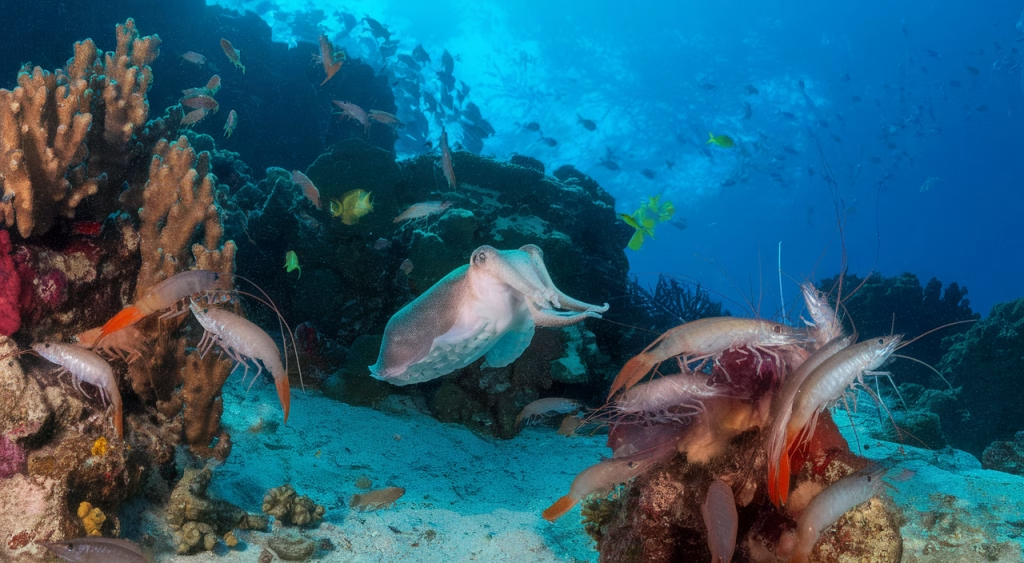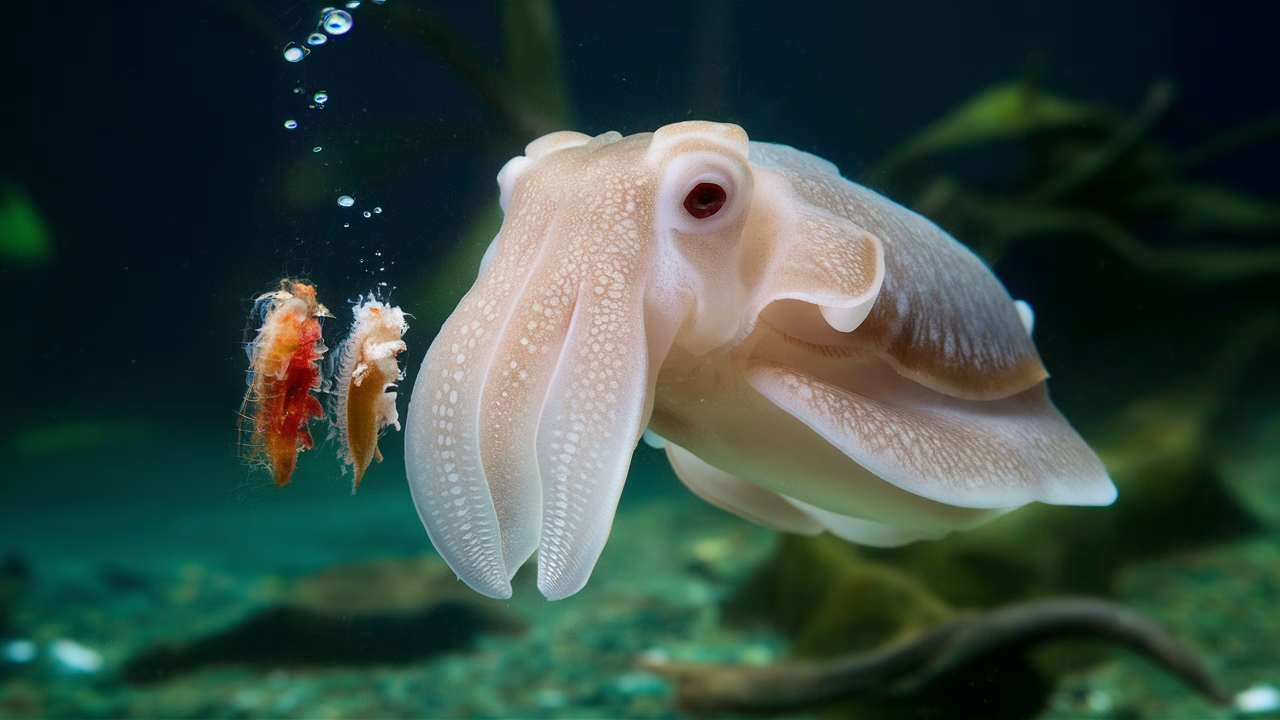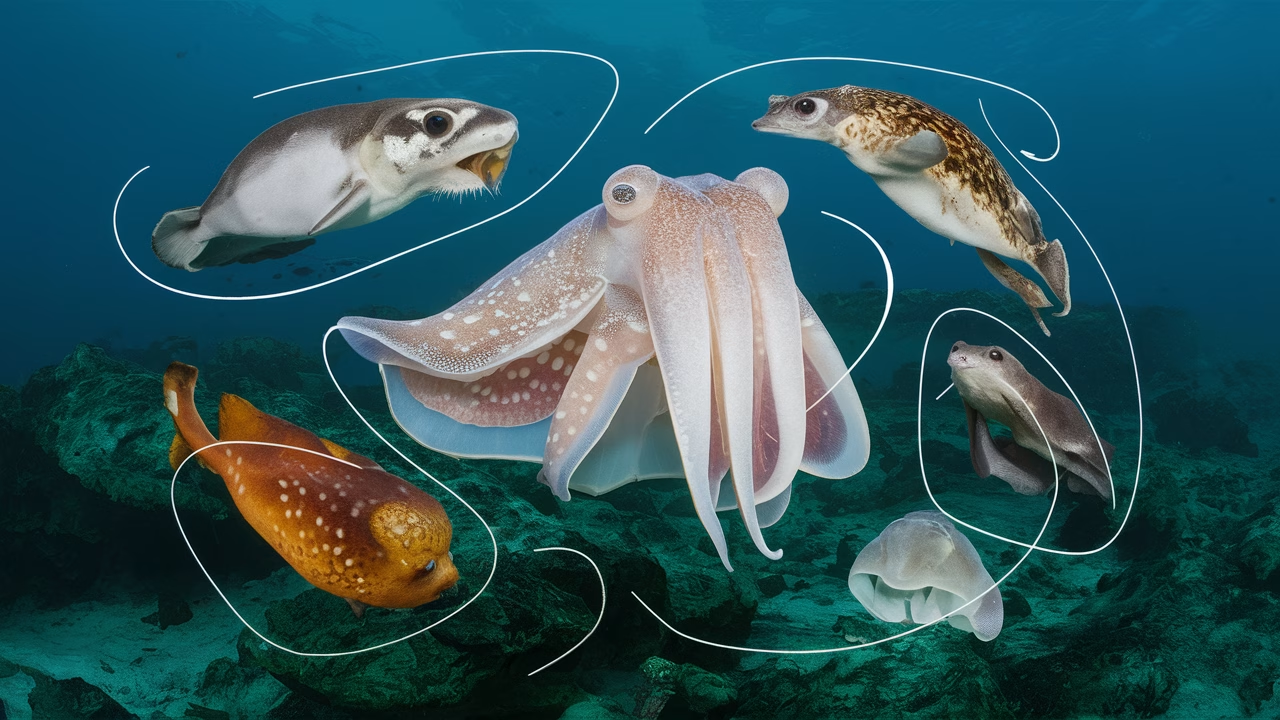How Do Cuttlefish Count?
Yes, cuttlefish can count — and not just in a vague sense. Recent studies show that these fascinating marine animals possess a surprising set of cognitive tools allowing them to perform basic arithmetic tasks. But how is counting even possible underwater, without fingers, calculators, or language?
TL;DR
- Cuttlefish count by comparing quantities visually, making spontaneous judgments without training.
- Research shows they consistently choose the larger of two shoals of shrimp — indicating innate numerical sense.
- Their mathematical abilities assist with survival strategies, like minimizing predator risk and maximizing food intake.
- Cognitive experiments reveal similarities between cephalopod and primate decision-making behavior.
- These discoveries expand how we define intelligence in the animal kingdom, beyond mammals and birds.
The Fascinating World of Cuttlefish
Imagine a creature that looks like a living spaceship, shifting colors like a mood ring, camouflaging at will, and navigating a complex marine world with eight arms and instincts sharper than most land predators. That’s the cuttlefish — a cephalopod cousin of the octopus and squid.
But even beyond their sci-fi appearance, cuttlefish possess cognitive powers that are reshaping how scientists think about intelligence in the animal kingdom. The most curious of which? These tentacled marvels can count — and that’s just the start.
Understanding Cuttlefish Intelligence
Cuttlefish are cephalopods, part of the same family as octopuses and squid. This group has garnered attention for their often remarkable intellect and unusually large brain-to-body ratios, rivaling some birds and mammals. But it’s one thing to appreciate intelligence in lions or crows. It’s quite another to find those same attributes in an underwater mollusk without a backbone.
Cephalopod intelligence displays in many ways: problem-solving, communication, memory formation, and even tool use. In cuttlefish, these faculties are often demonstrated through deceptively simple behaviors, such as stalking prey, navigating obstacles, and rapidly adapting to unfamiliar patterns — behaviors that suggest abstract understanding and advanced cuttlefish cognitive abilities.
But counting? That’s a cognitive leap that requires more than instinct. It requires comparative reasoning and demonstrates remarkable cuttlefish math skills.
Exploring Cuttlefish Mathematical Abilities
So, what’s the evidence that cuttlefish can count? One of the most cited experiments involved placing cuttlefish in tanks where they had to choose between two different quantities of prey — typically shrimp.
Consistently, the cuttlefish chose the larger group. But more fascinatingly, they made better decisions when the numerical gap was wider (e.g., choosing 5 over 2 more accurately than 2 over 1). This mirrors the way human infants and even some primates distinguish between quantities, a cognitive rule known as the Weber Ratio.
This reveals something deeper about how cuttlefish count: they don’t only perceive quantity — they seem to process it. They’re not performing addition the way we write equations, but they exhibit logic that supports basic numerical comparison — the first step in any number-based understanding and a cornerstone of cuttlefish math skills.
In more refined tests, researchers introduced variations that tested working memory and delayed gratification. In one such study, cuttlefish used math-like behavior to wait for a larger reward — suggesting a blend of counting with planning — a hallmark of higher cognition and marine animal counting ability.
How Cuttlefish Count
Their ability to count doesn’t come from language, as it might in humans, or from vocal tones like in dolphins. Instead, cuttlefish use non-verbal, spontaneous numerical judgment. Their primary tools? Sharp visual acuity and an intrinsic sense of quantity that demonstrates sophisticated marine animal counting ability.
| Counting Feature | Description |
|---|---|
| Visual Discrimination | Differentiate between groups of prey based on appearance and motion |
| Weber’s Law | More accurate when the difference between numbers is greater |
| Working Memory | Hold information long enough to make a calculated choice |
| Reward Optimization | Use numerical sense to maximize food intake |
Let’s apply this to an analogy you’ll recognize. Imagine two vending machines: one gives you 2 snacks per dollar while the other gives 5. Without needing to read or even think too critically, you’d go to the one offering more. This instinctive calculation, based on zero standard math training, is the type of marine animal counting ability we see in cuttlefish behavior.
The Role of Numeracy in Cuttlefish Survival
Now, you might ask — why would evolution give a cuttlefish the ability to count? It turns out, the answer is pretty practical: numeracy helps with survival. These cuttlefish cognitive abilities serve essential functions in their daily lives.
- Foraging: Choosing where to invest time hunting for food based on available quantity and quality
- Predator Avoidance: Estimating the number of threats in different directions
- Territory Selection: Opting for habitats with denser resources based on environmental cues
This kind of decision-making doesn’t just reveal advanced thought—it shows that something as abstract as math can be deeply rooted in survival instincts, highlighting the practical importance of cuttlefish math skills.
Implications of Cuttlefish Cognitive Skills
The deeper significance of these mathematical abilities is how they change our perception of animal minds. No longer can intellect be seen as the sole property of primates, parrots, or dolphins. Cuttlefish cognitive abilities suggest that complex problem-solving evolves in parallel in completely different lineages — perhaps even in alien-like environments of the deep sea.
This has ripple effects across disciplines. In robotics, researchers are studying how cuttlefish count and make decisions to inform flexible AI designs. In education, their perceptual learning inspires new teaching strategies for children with non-verbal learning disorders. And in conservation? Increased awareness of marine animal counting ability and intelligence improves empathy — helping protect species often overlooked in policy discussions focused on vertebrates and charismatic megafauna.
What does this mean for you? It means next time you’re snorkeling or watching a nature documentary, you’re peering into a brain that may be calculating prey density or remembering your presence from earlier — all without a word spoken, using sophisticated cuttlefish math skills.
Frequently Asked Questions
- Do cuttlefish really know how to do math?
They don’t solve equations, but yes — they demonstrate the ability to compare quantities and optimize choices based on numbers, showing clear cuttlefish math skills. - Are cuttlefish smarter than octopuses?
Not necessarily smarter — just differently intelligent. Octopuses are highly exploratory. Cuttlefish are more methodical and memory-focused, with distinct cuttlefish cognitive abilities. - Can cuttlefish be trained in labs?
Yes, they respond to operant conditioning and memory training, which further supports their learning capabilities and marine animal counting ability. - Does this mean they’re conscious?
Consciousness is complex. But their behaviors suggest a level of awareness much higher than many assume of invertebrates, as evidenced by their cuttlefish cognitive abilities. - Is counting exclusive to cuttlefish?
No. Other cephalopods and even some fish, birds, and mammals exhibit counting-like behavior — but not always through the same mechanisms that enable how cuttlefish count. - How does cuttlefish counting benefit us?
It informs neuroscience, education strategies, AI development, and wildlife conservation — all while reshaping our understanding of intelligence and marine animal counting ability.





